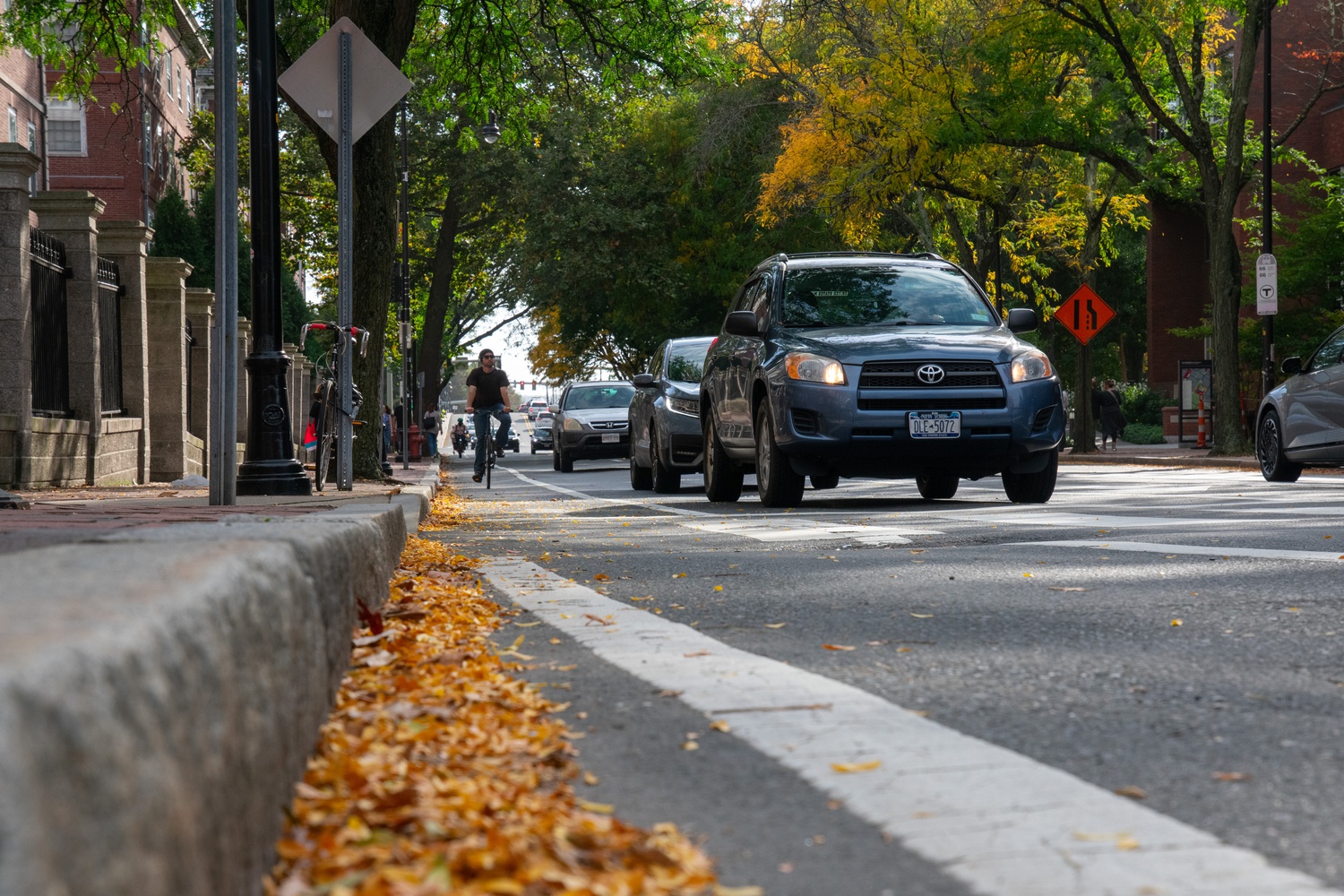
News
Progressive Labor Party Organizes Solidarity March With Harvard Yard Encampment

News
Encampment Protesters Briefly Raise 3 Palestinian Flags Over Harvard Yard

News
Mayor Wu Cancels Harvard Event After Affinity Groups Withdraw Over Emerson Encampment Police Response

News
Harvard Yard To Remain Indefinitely Closed Amid Encampment

News
HUPD Chief Says Harvard Yard Encampment is Peaceful, Defends Students’ Right to Protest
Walking and Rolling Towards A Safe and Sustainable Square

Harvard’s campus sidewalks have been slightly busier than usual. As the micro-mobility movement surges in popularity, walking through the Yard or the Square is no longer as peaceful as it once was — flocks of electric scooters dominate the streets, causing traffic while students rush to their morning classes.
Last week the Boston Globe published a story about the proliferation in sidewalk traffic and its impact on pedestrians. While we agree with the article’s criticism that electric scooters zooming by passersby on the sidewalk are inconvenient, we also recognize they’re just that: inconvenient.
The kerfuffle over scooters distracts from a discussion on the real threat against safety in Harvard Square: the deadly scourge of cars.
We dream of a Harvard Square facilitating the ideal of mobility justice: a world where all people, regardless of background, ability, or mode, can move through public spaces with dignity. We want to experience joy on our streets, from relaxed river strolls along Memorial Drive to hurried CVS-runs across Mass Ave.
Importantly, this vision is absent of cars. Cars are bad for our city and noxious for our environment, exerting a tremendous cost through dangerous speeding and harmful pollution. The death toll for Americans in car crashes since 2000 is higher than the American death toll in both World Wars combined — a statistic begging for substantive policy action.
Since the death of 67-year-old cyclist Sharon Hamer, who was tragically killed by a truck driving through Harvard Square four years ago, we have called for a car-free Harvard Square. It is important to recognize that car crashes like these are not accidents, but rather are the consequences of our failing to create safe, dependable street infrastructure. That Boston and Cambridge are the top Massachusetts localities in cyclist deaths so far this year is cause for deep reflection and policy reform.
However, this isn’t just a question of removing cars from the Square; we must also actively ensure that our campus is pro-pedestrian and pro-cyclist. Policies aiming to improve safer streets should ensure that our sidewalks remain accessible — including to individuals with disabilities — and promote the use of sustainable micro-mobility bikes, skateboards, and e-scooters. After all, bikes emit staggeringly fewer emissions than cars and are better for our community’s air quality than automobiles.
While we completely endorse micro-mobility transportation as healthy and beneficial for society, we support keeping Harvard Yard a pedestrian space, and encourage students who wish to bike or skateboard to class to use real streets instead of whizzing through (or, on unfortunate occasions, headlong into) throngs of students headed to class.
A recent survey of Cambridge residents shows that people are hoping to see the streets become more friendly to cyclists, and we are excited to see our streets develop. The goal should be to make Cambridge a 15-minute city; residents must be able to safely and quickly access grocery stores, classrooms, and restaurants on foot or on two wheels.
As this movement attracts both momentum and resistance, it’s important to recognize how power and inequality inform government decisions about the accessibility of our streets. We cannot let the desires of the few, such as the preferences of wealthier and whiter residents with concerns about the impact of bike lanes on parking, drown out the voices of many — the voices that care deeply about making Cambridge’s streets safer.
In the meantime, as we continue developing our limited street infrastructure, we should be mindful of our fellow travelers by remaining careful when navigating sidewalks. Bikers should similarly avoid careless riding by using bike lane facilities. We should proudly champion the cause of mobility justice and continue informing the Cambridge City Council of our needs.
By doing this, we can mitigate the stigma around micro-mobility, protect our urban environment, and dismantle a culture that often lacks social cohesion by building our community from the streets up.
A car-free Harvard Square may feel like a fever dream today, but the spread of micro-mobility options can move us one step closer to a better city for all.
This staff editorial solely represents the majority view of The Crimson Editorial Board. It is the product of discussions at regular Editorial Board meetings. In order to ensure the impartiality of our journalism, Crimson editors who choose to opine and vote at these meetings are not involved in the reporting of articles on similar topics.
Have a suggestion, question, or concern for The Crimson Editorial Board? Click here.
Want to keep up with breaking news? Subscribe to our email newsletter.
